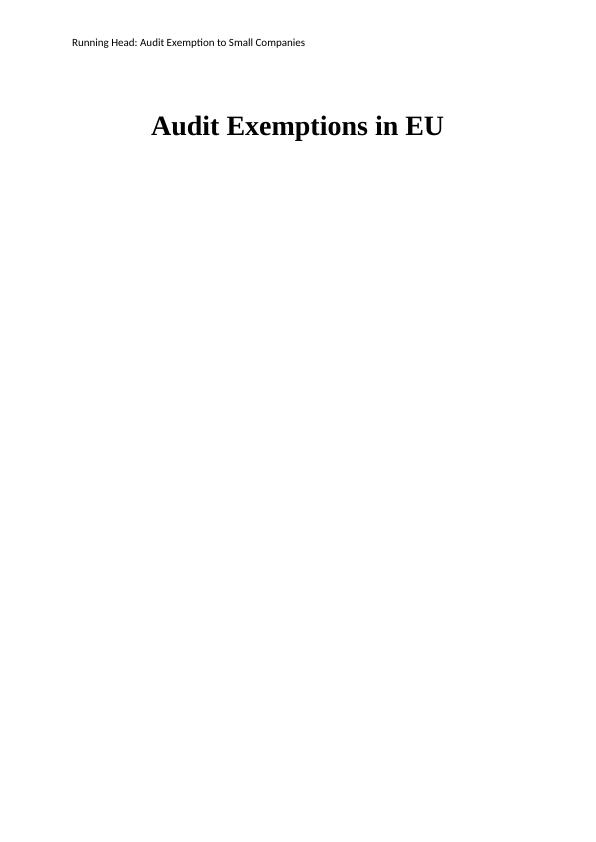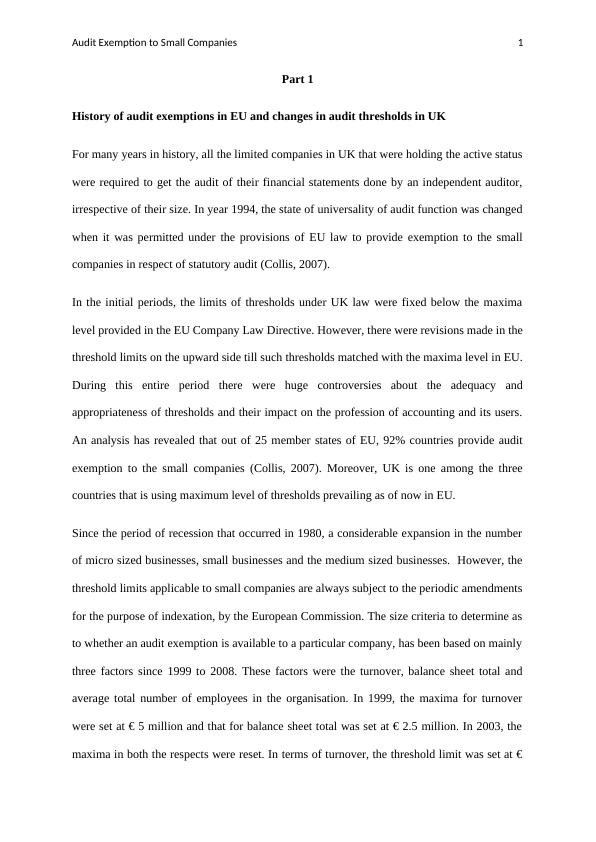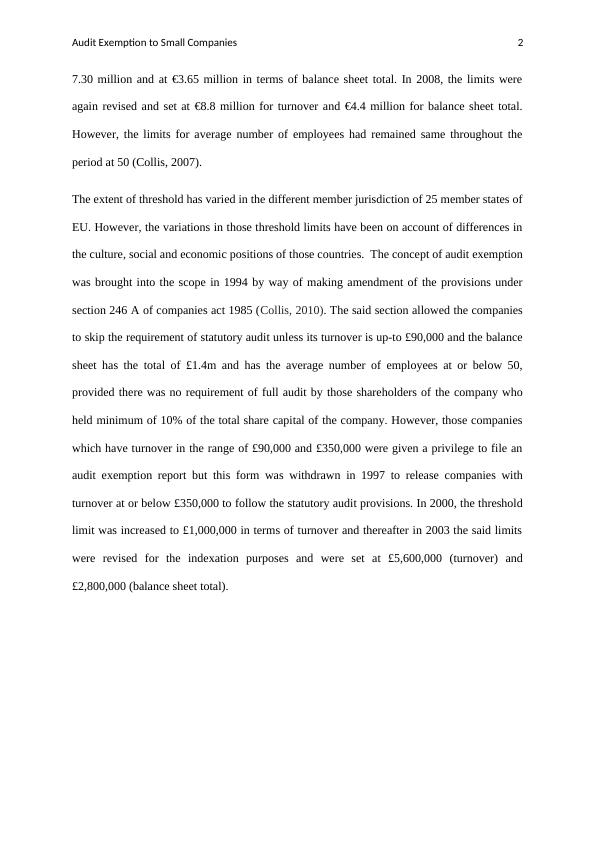Audit Exemptions in EU
10 Pages2308 Words95 Views
Added on 2023-06-03
About This Document
This article discusses the history of audit exemptions in EU and changes in audit thresholds in UK. It also presents arguments for and against the audit exemption to small companies and explores the impact of continuous increase in audit exemption thresholds.
Audit Exemptions in EU
Added on 2023-06-03
ShareRelated Documents
End of preview
Want to access all the pages? Upload your documents or become a member.
History of Audit Exemption in EU and Changes in UK Thresholds
|7
|2712
|490
Audit exemption in Europe - Assignment
|14
|2506
|84
Audit Exemption in EU and UK: History, Thresholds, Arguments and Future
|8
|2801
|424
Small and Medium-Sized Enterprises: Growth and Financial Contribution in the UK Economy
|17
|5116
|73
Business Accounts
|5
|1009
|361



